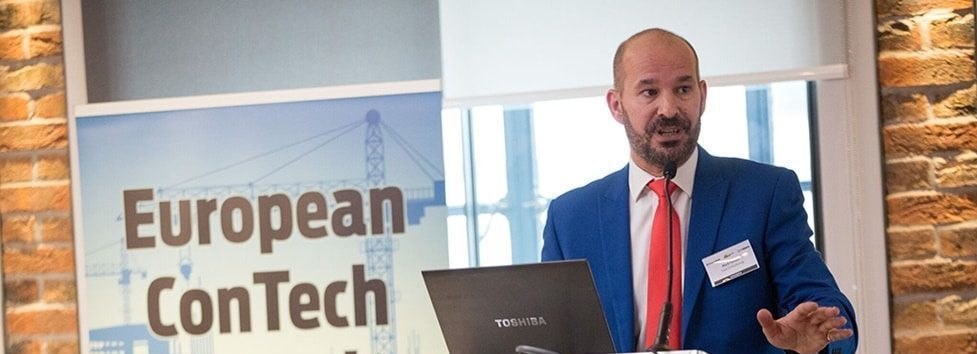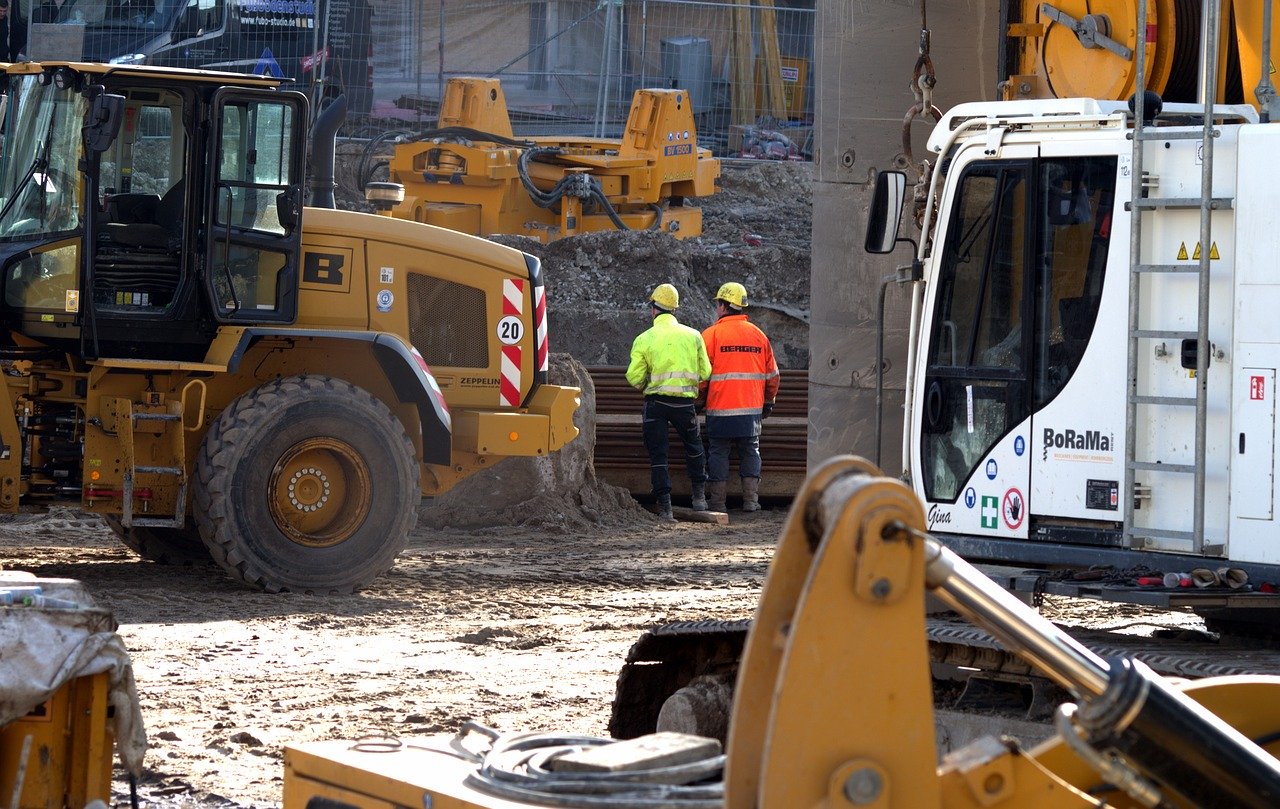At the end of January, GenieBelt, in collaboration with BIMobject and Construction News had the honour to host the European ConTech Summit 2019. The discussion took place in London where some of the greatest minds in the construction industry came together in order to exchange ideas and insights about the digital journey of the sector.
[click_to_tweet tweet=”Mark Farmer analyses the unholy trinity of structural change!” quote=”Mark Farmer analyses the unholy trinity of structural change!”]
Mark Farmer, Founding Director and CEO at Cast Consultancy, was also an active part of this fruitful dialogue. In his keynote speech, Mark Farmer referred to the megatrends that will eventually change our industry once and for all and will lead to a structural change of the entire industry.
The unholy trinity of structural change
More analytically, as Mr. Farmer highlights construction is now facing an unholy trinity of structural change which consists of three coinciding global megatrends. These three trends could be summed up to the following:
Demographic change
First things first, there is a notable demographic change in construction as the workforce of the sector is getting older and older. This is a serious issue for both the United Kingdom and the global construction sector.
“We know we have an ageing workforce. This is not just a UK issue, this is an issue shared by many developed economies.”, explains Mark Farmer who referred also to the example of Japan a well-developed economy that is hit by the demographic change nightmare.
Simply put, construction has many more people leaving the industry every year than people joining. It doesn’t take much to realise that as the age of the workers is increasing this problem will become more and more imminent.
“I think one of the biggest issues that we are facing into is a real crisis around resourcing, so a lot of people, a lot of time talk about construction having a skills crisis but I think the nature of the problems that we have now is very different perhaps to when we talk about a skills crisis in the past. This is an existential threat to resourcing. We have an ageing workforce and we also have a real problem getting young talent into our industry in a sufficient quantity in order to make up for the people that are retiring.”, adds Mark Farmer.
Societal change
In addition to the first point, a generational shift is curving with regards to how young people view the construction industry.
More specifically, there is a restricted talent pool. Young people don’t see construction as an appealing career option resulting in a serious skills shortage crisis.
As Mark Farmer notices:
“My sense is that in the last five years, and I think this is accelerating, young kids just don’t identify with construction being an aspirational career choice. You can make money, but is that enough anymore?”
And he adds:
“I don’t think that it’s just about the money, it’s about fulfillment, it’s about interest, it’s about technology.”
In other words, the construction industry needs to find a way to inspire young people and shift the public perception that construction is dirty or dangerous. Embracing digital technology could help a lot in that direction and lead educational institutions and families to lead their children towards construction.
Geopolitical change
Last but certainly not least, the groundbreaking global geopolitical change has its own influence in the construction industry. This geopolitical change seems to be composed of two substantial elements: the intolerance to free borders and the increasing migration.
Both those factors have a strong impact on the global political agendas and affect the construction industry in a number of ways (eg. free movement of labour, tariff-free transactions).
Find also: Niels Falk on why construction needs to stop running on tradition
Mark Farmer believes that the new situation that is about to emerge will create great problems in securing labour for construction. We are talking about a much broader crisis than the skills crisis that we are normally referring to.
This is about architects, planners, surveyors, engineers and construction managers. So it’s not only a matter of productivity but also a matter of competence.
“I do believe that we have a burning platform. We’ve had a lot of false dawns, but the industry is facing megatrends that will force it to change: demographic change, societal change and geopolitical change”, concluded Mr. Farmer who described also the case of Carillion as a strong wake-up call for construction.
3 transformational themes unleashed by technology
Despite the problematic situations mentioned above, Mark Farmer highlights that technology will eventually unleash the three following transformational themes for construction:
- Worker augmentation: Generative parametric design tools and spatial computing will change skills needs across the design and construction process.
- Substitution and disintermediation: Advising consultants will be challenged on their “value-add” and data will be democratised and processes automated.
- Distributed manufacturing: Subtractive and additive manufacturing will get closer to the final site.
“It now looks like construction is just going to be a bit late to the modernisation party rather than never arriving at all,” says Mark Farmer.
Game-changing tools coming up soon
During the Summit, Mark Farmer referred also to the impact that construction solutions are expected to have on the construction process in the near future.
Areas such as design, costing, and scheduling will experience substantial changes in the upcoming years thanks to the use of artificial intelligence and machine learning programmes.
“So at the moment going back to what I said, lots of mundane activities that we do in construction, including in consultancy, I can see being automated in fairly short order. And those programmes and algorithms and software platforms are already in existence, they all need further refinement and they need businesses to engage to improve what they do for their individual circumstances. But I see robotic process automation to go in different ways,“ explains Mr. Farmer.
Augmented reality is also part of this groundbreaking change and it holds great potential for the construction phase. The project workforce could have a detailed overview of the work phase thanks to the use of a digital twin.
On top of that, they could benefit from a number of innovations such as, video evidence of what they are installing and advanced working guidance.
As Mark Farmer points out:
“We are talking about major game-changing improvements in how we deliver construction!”
“We should focus on where technology can make a difference”
Digital technology is taking construction by storm, but it’s vital that the industry maintains the right focus. In that sense, it is of paramount importance that the sector concentrates its forces on where technology can have a decisive impact instead of using technology for technology’s sake.
“It’s really important to take a step back and think about how we are going to use technology and why we are going to use technology and ultimately it’s going to answer a problem statement“, notices Mark Farmer.
That problem statement could be the automation of a repetitive and time-consuming process and the transition of a human process to a technology-driven process.
“What technology should be doing is freeing up resources and if we are really honest about it, it should be about improving profitability. We are in an industry where we really struggle sometimes to make money and technology actually creates an opportunity to be a bit more productive and effective, not put prices up for clients and make more money,“ highlights Mr. Farmer.
Interesting times for construction
All in all, construction is in front of a very crucial path. There is a combination of circumstances which are expected to add great pressure to the industry in the near future.
If we also take into account parameters such as Brexit and the increasing need for overseas workforce, it becomes clear that the sector has to manage an explosive mix.
As Mark Farmer concludes:
“If you bring all of that together, it creates a real cocktail risk around the fact that we have to be more productive because as an industry we will be asked to deliver more and more, including for government around its infrastructure programme, new housing as well as all of the commercial construction that the private sector requires.”




